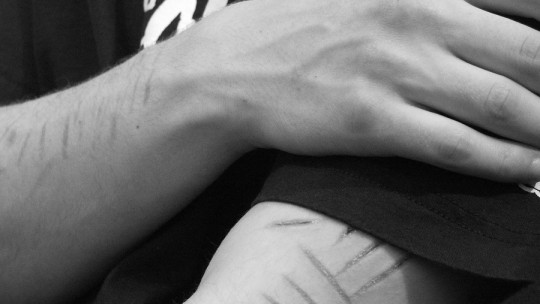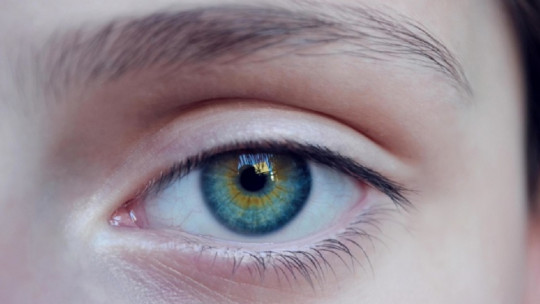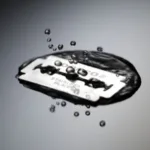Self-harm is behavior in which the person harms themselves, either through cuts, burns or blows. The first self-harming behaviors usually appear during adolescence, and there are young adults who also present them.
Next we are going to review what they are, in addition to seeing the types of self-harm that exist what personality characteristics the people who perform them present and what disorders and traumatic events can influence their appearance.
What is self-harm?
Self-harm is any behavior, intentional and self-directed, that involves some type of harm, immediate destruction of body tissues, and the formation of wounds
It can manifest itself in the form of different types of injuries, such as cuts, marks on the skin, burns, mutilations or blows, associated with a wide variety of psychological problems and mental disorders. This type of behavior does not include overingestion of drugs or poisoning with autolytic intent.
Self-harm is not intended to be a suicide attempt, although this does not mean that the person who commits it has not considered taking his own life on other occasions. These are harmful and maladaptive ways of coping with emotional pain, anger and frustration. It is a way of feeling that you have control of the situation, hurting yourself and feeling a momentary calm and release of tension However, after having self-harmed, guilt and shame come, and painful emotions return.
Types of self-harm
Self-harm can be classified into two main types. The first has to do with the action itself, that is, what type of wound it causes. The second has more to do with the severity and frequency of the self-harming behavior itself.
Depending on the type of wound
Of the types of self-harm according to the wound they cause, we have the following types.
1. Cuts
Cuts can be made with all types of sharp objects, such as knives, cutters, threads, needles, razor blades or even nails It involves making deep cuts or scratches on various parts of the body, such as the arms, legs and the front of the torso, which are the places where self-harm is most common, since they are easily hidden with long-sleeved clothing.
Cutting can become a habit, in the form of compulsive behavior. The more times the person has cut themselves, the more need they will have to do it when a stressful stimulus or situation that causes anxiety appears.
The brain begins to connect the false sense of calm as a good strategy for coping with negative emotions.
2. Chafing and burns
The person may scratch compulsively until blood comes out , or rubbing objects such as cloth, tape, or other materials to cause a friction burn. You can also burn yourself with fire, using matches, lit cigarettes or hot knives, or by throwing yourself hot on yourself.
3. Carving words or piercing your skin
Engraving words or symbols on the skin is done with cutters or sharp objects and, As with cuts, they are usually made in parts that are easy to hide, such as arms and legs
Getting many piercings and tattoos could be included within this category, since it could be an indicator of suffering a lot of emotional pain and wanting to cope with the pain caused by the tattoo needle.
4. Hitting, punching or hitting your head
They can hit themselves in the chest, stomach, behind the head or even by hitting a wall or door.
5. Trichotillomania
Trichotillomania is an impulse to pull out hair, both from the scalp and eyebrows, mustache , beard, nose or other parts of the body. It can go from a habit to an addiction, being a behavior present in obsessive-compulsive disorder (OCD).
Pulling out your hair means that bald spots form, since the hair does not have time to grow or, even, alopecia has accelerated. This causes people who have this behavior to wear hats, caps or wigs.
6. Dermatillomania
Dermatillomania is the self-injurious behavior of reopening wounds, picking off the scab or new skin removing stitches or plasters.
Depending on the severity of the injury
Depending on how serious and concealable the self-harming behaviors are, we have the following types of injuries.
1. Stereotypical self-harming behaviors
Acts that are carried out anywhere, and that vary from minor to serious injuries.
2. Major self-harming behaviors
They involve some type of amputation. They are associated with severe and psychotic psychopathology
3. Compulsive self-harming behaviors
Repetitive, ritual-like behaviors that occur multiple times a day, such as nail biting (oncophagia), hair pulling and eating (trichotillomania), or hitting the back of the head.
4. Impulsive self-harming behaviors
There is concern about harming oneself. It is an impulse that is difficult to resist, produces anxiety, with a subsequent feeling of relief and without suicide attempt
What characteristics do people who self-harm have?
There are a series of common personality traits in people who self-harm, although it must also be taken into account that having experienced a traumatic situation and going through a stressful one are factors that influence the appearance of these behaviors.
It is not at all strange to observe that people who carry out this type of behavior have clear deficits in emotional skills That is, they have problems with awareness and expression of their emotions, and since they do not know how to deal with them nor do they know why they feel that way, they resort to self-lytic behaviors.
A quite striking trait is self-criticism, insecurity and perfectionism. They are people who tend to be very strict with themselves, who demonstrate their disagreement with how they are or what they have not achieved with explosions of anger and self-directed aversion. Self-harm is a kind of self-punishment, and it is not difficult to find that underneath there is a clear problem of low self-esteem, in addition to negative emotionality
Why do they self-harm?
Cutting yourself, burning yourself, or attacking yourself in any way is a way to control emotional pain, although inefficient. The person may be going through a very stressful situation, and does not know how to cope with it in an adaptive way, basically because he does not know how to identify the origin of what is causing him psychological damage.
When you self-harm, when you hurt yourself, the pain becomes specific and localized, you know where it is. Transform something psychic into physical, directing your attention to the recent wound that is on the skin, the bruise that has been caused or the burn that has occurred.
Psychological problems and disorders
Self-harm does not have to last a lifetime. Sometimes they occur during times when the person is going through a tense situation. However, there are mental disorders in which this type of behavior is a symptom. They also appear even when the person is the victim of some aggression as happens in bullying or partner abuse.
In addition to having been a victim of:









